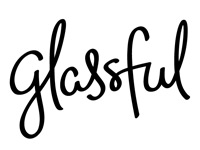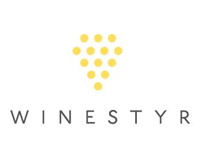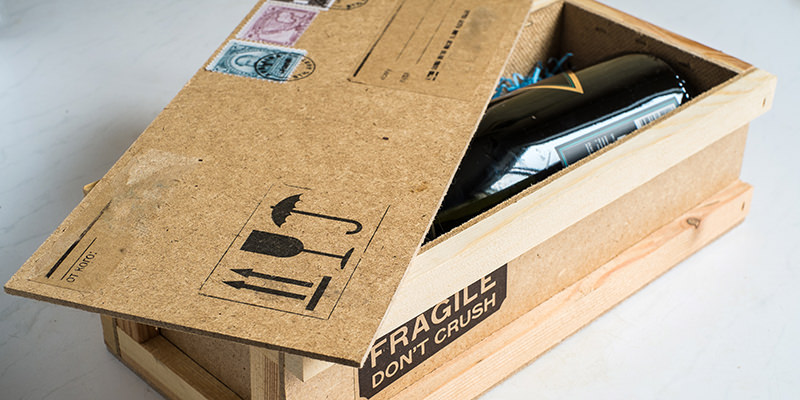If you’ve ever posted on Facebook something about wine (maybe “dying for a glass of wine RN,” for example), then you’ve probably seen an ad pop up, for one of the many new wine delivery services vying for a slice of the market.
Wine delivery isn’t exactly new; for a long time wineries, especially smaller-production ones, have relied on customers subscribing to regular shipments of whatever they are sending out. These wine clubs have typically not been very cheap; they were more oriented toward connoisseurs than everyday drinkers. But in recent years, we’ve seen start-ups forming more updated, Millennial-focused versions of these wine clubs, offering consumers a confluence of good value, good wine, and something to satisfy everyone’s palate. These new delivery services exist on the basis of two important facts: one, that Millennials all over the country have an insatiable thirst for wine, and two, that those same Gen-Yers also love buying stuff online and having it show up in the mail, and have become accustomed to this lifestyle ever since the rise of Amazon and similar businesses. Each of these new wine delivery services has its own schtick, its own approach to making sure that you get bottles you are satisfied with and which are a good value—both to you, the consumer, and to them, the business. And, because Millennials don’t want to pay a lot for wine – or for shipping – each service is also faced with the significant challenge of finding a profitable model.
“Millennials are in search of authenticity,” explains Logan Lee, the 32-year old co-founder of Wine Awesomeness. The company was founded in July 2013, and now sends out up to 15,000 boxes each month. “People want real brands, and real winemakers. So we’re selling real wine.” But along with the actual bottles, content is a big focus for Wine Awesomeness; they analyze the shares of their articles online to see what people are into. “I think brands underestimate their customers; people are interested in learning but don’t want to be talked down to,” says Lee.
Wine Awesomeness offers four options for monthly delivery: three wines (either all-white, or all-red, $45); a mix of red/white/bubbly ($45); or six wines ($75). Peter Eastlake, a sommelier based in Sonoma, curates the box of wines, which come from around the world. Each box comes with an attractive, small magazine with informative articles written by independent journalists and sommeliers who are truly passionate about wine, as well as recipes to pair with the wines. Each magazine has a theme, which may be regional (Eastern Europe) or more topical (female winemakers). It’s great that Wine Awesomeness is encouraging people to learn about the people, issues, and stories behind wine. And the price is right; $45 including delivery for 3 bottles is great. How do they keep the price low? Content partnerships in the magazine help: Wine Awesomeness has venture capital backing, and also works with brands on content like recipes. In turn, the brands publicize the content, which drives consumers toward Wine Awesomeness, lessening the need to advertise. This savvy approach gives Wine Awesomeness its edge over the competition, allowing it to choose nice wines without charging a lot of money.
offers four options for monthly delivery: three wines (either all-white, or all-red, $45); a mix of red/white/bubbly ($45); or six wines ($75). Peter Eastlake, a sommelier based in Sonoma, curates the box of wines, which come from around the world. Each box comes with an attractive, small magazine with informative articles written by independent journalists and sommeliers who are truly passionate about wine, as well as recipes to pair with the wines. Each magazine has a theme, which may be regional (Eastern Europe) or more topical (female winemakers). It’s great that Wine Awesomeness is encouraging people to learn about the people, issues, and stories behind wine. And the price is right; $45 including delivery for 3 bottles is great. How do they keep the price low? Content partnerships in the magazine help: Wine Awesomeness has venture capital backing, and also works with brands on content like recipes. In turn, the brands publicize the content, which drives consumers toward Wine Awesomeness, lessening the need to advertise. This savvy approach gives Wine Awesomeness its edge over the competition, allowing it to choose nice wines without charging a lot of money.
 For Glassful, a wine delivery service as well as a brick-and-mortar shop in Queens, New York, wine delivery is an unavoidable way of the future. “Like any other product we nowadays consume – a pair of jeans or some fresh fish – wine is something you consume at home. We wanted to create a service that can provide that on demand,” says Adria Jover, Glassful’s 34-year-old founder. Jover adds that “the wine industry is behind other spaces like food,” in terms of creating an effective system for delivery.
For Glassful, a wine delivery service as well as a brick-and-mortar shop in Queens, New York, wine delivery is an unavoidable way of the future. “Like any other product we nowadays consume – a pair of jeans or some fresh fish – wine is something you consume at home. We wanted to create a service that can provide that on demand,” says Adria Jover, Glassful’s 34-year-old founder. Jover adds that “the wine industry is behind other spaces like food,” in terms of creating an effective system for delivery.
Glassful has about 1000 subscribers to its delivery service. When you log onto the site, there is a short (and fun) personality quiz of sorts, aimed at determining what your palate is like, and therefore which kinds of wine are your style. Based on this quiz, which Joyer developed with the help of a sommelier, he curates a selection of three bottles from all over the world, emphasizing small-production and environmentally sustainable wineries, at the cost of $54 each month including shipping. Glassful also asks its customers to rate the wines in their boxes, which provides helpful feedback that Joyer takes into account.
At the moment, Glassful’s delivery service would not exist without the revenue from the store. “It won’t be profitable for another few years,” says Joyer. More likely, it won’t be profitable until Glassful takes its biz strategy up a notch, finding a way to expand their reach. They offer great bottles from family-run wineries, made through ecological agricultural practices – all at a fairly good price. Hopefully, with some intelligent marketing they’ll attract more consumers.
 Another interesting company is Winestyr, founded by 31-year-old Bob Wilson. After years of working for the giant Gallo, a California-based company that produces much of the country’s bulk wines under various labels, he decided to go his own way and partnered with a few other wine lovers who wanted to expose consumers to California’s smaller wineries.
Another interesting company is Winestyr, founded by 31-year-old Bob Wilson. After years of working for the giant Gallo, a California-based company that produces much of the country’s bulk wines under various labels, he decided to go his own way and partnered with a few other wine lovers who wanted to expose consumers to California’s smaller wineries.
“It’s not like we hate the big guys, but we don’t like the fact that there isn’t much transparency there for the little guys,” says Wilson. He compares the wine industry in its current state to the craft beer movement, saying that wine is behind beer. The main reason? It’s hard to tell from a wine label whether it’s actually small production, or just looks that way due to clever marketing. “I even got tricked by a wine’s label once,” recalls Wilson, laughing. “It was not at all what the label suggested – it was really fruity and there was sugar in it. I almost spit it out.”
So, what exactly is small production? For Winestyr, “anything under 50,000 cases a year is considered small, most of our producers are under 10,000 cases,” says Wilson. Even those numbers are actually quite a bit higher than some of the boutique producers in California and Europe who are making natural wines. But Winestyr can only go so small, because the winery has to be make enough to actually be a part of a growing distribution network. Currently, Winestyr sources from about 60 producers, nearly all in California (with the strange exception of one wine from Argentina), and they are about to welcome a few dozen more wineries into their portfolio over the next few months. The company founders take each relationship seriously: “We meet all of them, we know exactly who they are,” says Wilson. “We see the vineyards, we know their stories.”
Winestyr also uses a quiz to determine your palate. It offers a mixed case of three bottles for $75; or $135 for six mixed bottles; or just reds ($99 for three bottles; $179 for six) – all with shipping included. The company was founded in 2011, selling wine directly through their website, and taking on corporate clients, mainly Fortune 100 companies around the country who like to send wine as a gift to their clients. Just recently, in fall 2015, Winestyr launched its wine club, which now has about 200 subscribers. The company relies on venture capital to power it, and its corporate gifting clients are a significant source of revenue.
There are other companies out there to explore, but some of them manufacture bulk wine and put their label on it, which isn’t really going to deliver quality as much as nice packaging – don’t be fooled. Winestyr, Glassful, and Wine Awesomeness may still be refining their approach as they grow, but they all conduct themselves with integrity, respectfulness toward wineries, and an honest interest in exposing customers to cool and interesting bottles. Glassful and Wine Awesomeness in particular are great values — $45 or $54 for three bottles is not bad at all, with shipping included. If you live near a really great wine shop, where dedicated and knowledgeable staff will take the time to help you find excellent bottles, then I’m not sure why you’d sign up for these services. But not all of us have a retailer like this in our vicinity – so in that case, a wine delivery service would be a great way to expand your palate and explore the world of wine.
Of these three, Wine Awesomeness offers the best price, as well as interesting wines from good producers. Glassful is a bit more expensive, but it’s worth the premium if you really want to support wineries working organically and sustainably, using minimal chemicals. Winestyr is the most expensive; you may have noticed that most decent California wine is priced higher than bottles of the same quality level coming from Europe. That’s because land and labor are more expensive in California. So, if you like California wines and want to support domestic wine production, then Winestyr is a great way to do that.
All of these companies are set up to accommodate customers who travel, and need to cancel a box here and there; as well, they can all, despite their large customer bases, help customers who really don’t like certain kinds of wines, or who feel dissatisfied with the choices in a particular box. In short, they are Millennial companies: Wine Awesomeness leading the way in terms of content, and all three strong on customer service and Internet user experience. Unfortunately, some states like Utah and Pennsylvania have prohibitive laws against wine delivery, but if it’s allowed in your state, you might as well give one of these services a try. Perhaps you’ll discover some new grapes or wineries you really love.

